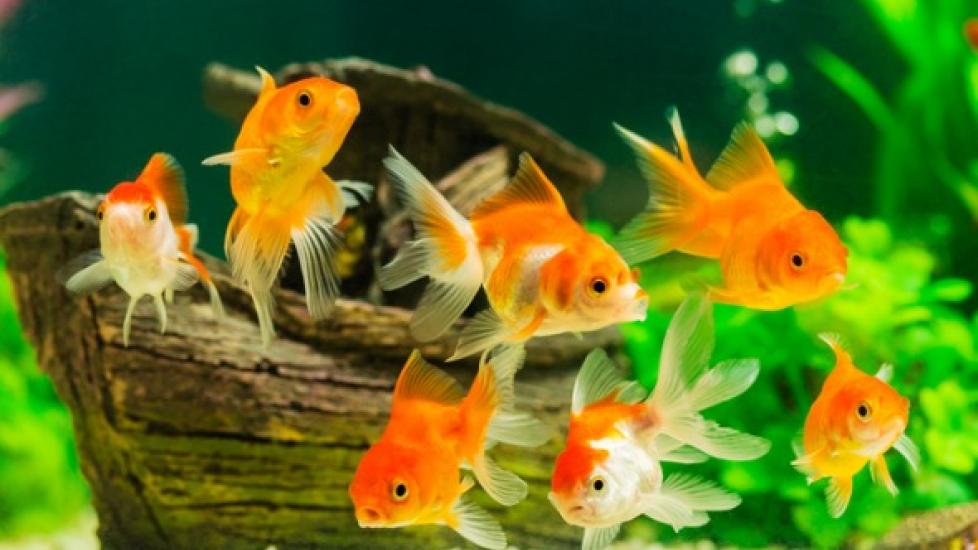Can You Actually Keep Fish in Bowls?
Even for many of us who already own and maintain sizable aquarium systems, the idea of keeping fish in a tiny enclosure can be rather appealing.
Whether on the office desk, a bedroom nightstand or an entry table in your home, it's understandable why someone might want that little splash of life that a fish bowl seems to provide.
You do have to admit that many of these bowls, especially when stocked with a miniature fish and a sprig of aquatic plant, can be quite cute. Additionally, some hobbyists, particularly those who are hesitant to spend much money, might consider a fish bowl a cheap alternative to a fish aquarium.
But for fish, they do not provide a healthy or suitable environment. Let’s find out why.
Fish Bowls Are Not Easier to Maintain
Most often and most incorrectly, some believe that because a fish bowl is smaller, it is easier to maintain than an aquarium. Nothing could be further from the truth.
As many seasoned aquarium retailers will surely tell you, the vast majority of attempts to keep fish in bowls ends in one of two ways: either keepers quickly find the bowl too difficult to manage and upgrade to a conventional aquarium system anyway, or their experience with the bowl is so frustrating that they give up on fishkeeping altogether. This is particularly so where novice fishkeepers are concerned.
Shop Fish Products
Fish Bowls Aren’t Stable Environments
Though it may seem counterintuitive, smaller containers require much more expertise to successfully operate over the long term. This is because they are comparatively less stable; both physical and chemical parameters tend to swing wildly in fish bowls.
Preventing these rapid fluctuations isn't very easy, either, due to the smaller water volume and typical lack of water filtration.
Fish Bowls Restrict Oxygen Levels
Undersized housing is bad for fish (or any animal) in any situation. However, bowl-shaped vessels are especially faulty. Part of this has to do with how the surface area of the air-water interface changes as you fill them.
Fish bowls are usually pretty small anyway, so the temptation is to fill them all the way up. Bowls taper toward the top, so completely filling them leaves too little water surface for proper gas exchange.
In many cases, fish suffocate even in the cleanest water simply because oxygen cannot diffuse into the water as fast as it is consumed. What is best for bowls is to fill them halfway to maximize the size of the water surface; however, this leaves pitifully little water for the fish to move around in.
Fish Bowls Lack Proper Filtration
Another problem with bowls is that they complicate filtration. This invites disaster, considering that the smaller a fish tank is, the more important it is that a good water filter is in place.
Typical filtration equipment simply does not easily fit into in oddly shaped containers. Sure, some bowls do come with custom-fit fish tank filters, heaters and even lighting.
However, these packages are usually more expensive than a similarly equipped (but much larger and more functional) 10-gallon beginner's aquarium setup.
Not an Ideal Environment
Worse than a bad deal, fish bowls, even with some sort of filtration, do not provide a healthy environment for your captive animals. And, arguably, the most enjoyment to be had in this hobby comes from pampering your pets and not from penny-pinching or cutting corners.
Fish are living creatures that are very much capable of experiencing stress. Fish bowls are inherently unnatural and uncomfortable places to live for any kind or size of fish.
For those folks who really, really like the look of a fish bowl and have severely limited space, a couple of hardy, appropriately sized aquatic plants might be your most reasonable (and ethical) stocking option.
What About Bettas and Goldfish?
Even though there really isn't any fish species that is suited for life in a bowl, bettas and goldfish are especially poor choices.
Bettas
Yes, you've seen it before. Bettas in bowls! Cups, even. And yes, a betta might even survive for some time under these conditions. But again, we should ensure that the animals in our care thrive, not merely survive.
Bettas prefer very warm water—even warmer than many other tropical fish. Thus, a dependable water heater (such as the Marina betta aquarium heater) is necessary.
Also, poor filtration can be fatal for this species. The fact that they can breathe air while in oxygen-poor environments has more to do with a hot climate (oxygen solubility decreases with increasing temperature) than with polluted waters in their native habitat.
Exposed to dirty water in an unfiltered or poorly filtered bowl or tank, bettas are highly susceptible to infections in their characteristically long fins.
Goldfish
Goldfish are perhaps the worst choice for a bowl, or any small container. Not only are they notoriously messy fish that generate copious amounts of waste, but they also grow to sizes more fit for a pond.
Yet the term "fish bowl" is nearly synonymous with "goldfish bowl."
This is mostly the result of millions of juvenile goldfish having been given away as carnival prizes, usually from inexperienced aquarists to inexperienced aquarists. Though they can live to many years of age, the unfortunate specimens obtained under these circumstances very rarely survive for more than a few weeks.
Fishkeeping is indeed a hobby where many, many conflicting opinions abound. However, among the most experienced aquarists and industry professionals, there is almost universal agreement that fish bowls just don't work.
Specifically, a bowl cannot provide an adequate living environment for any fish, big or small. So, give the fish under your care what they need and deserve: the biggest, healthiest home possible.
By: Kenneth Wingerter
Feature Image: iStock.com/satit srihin
